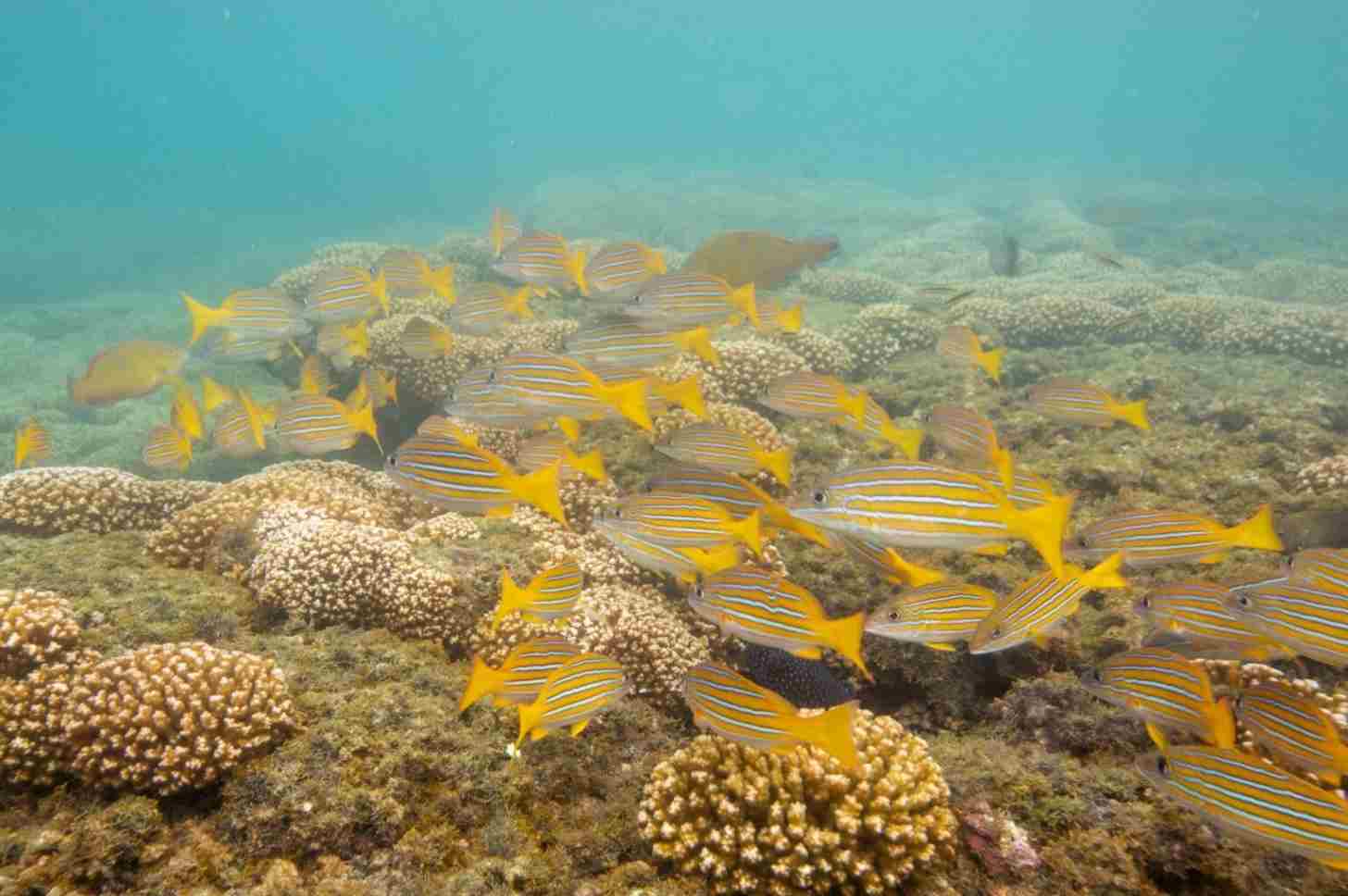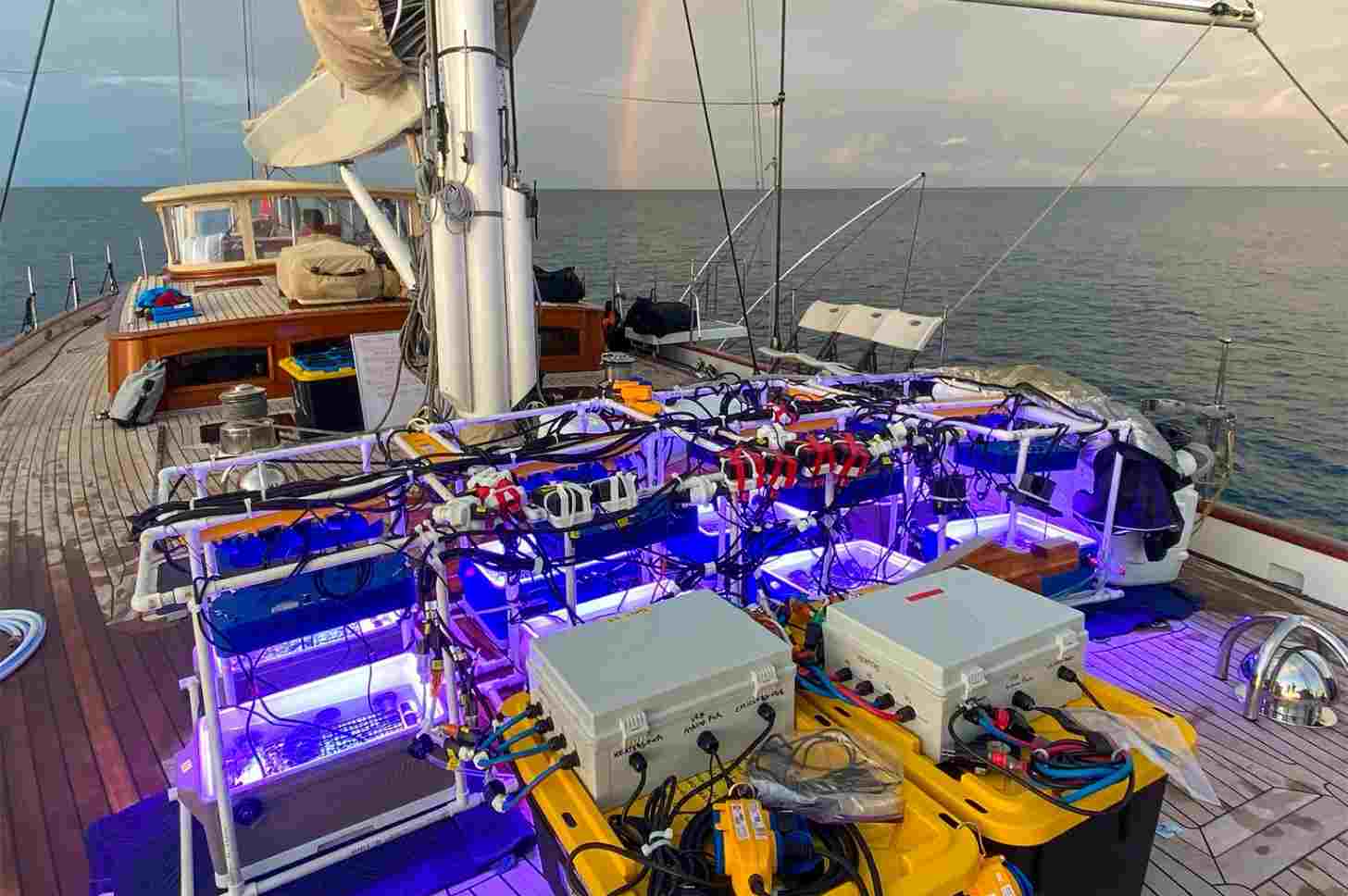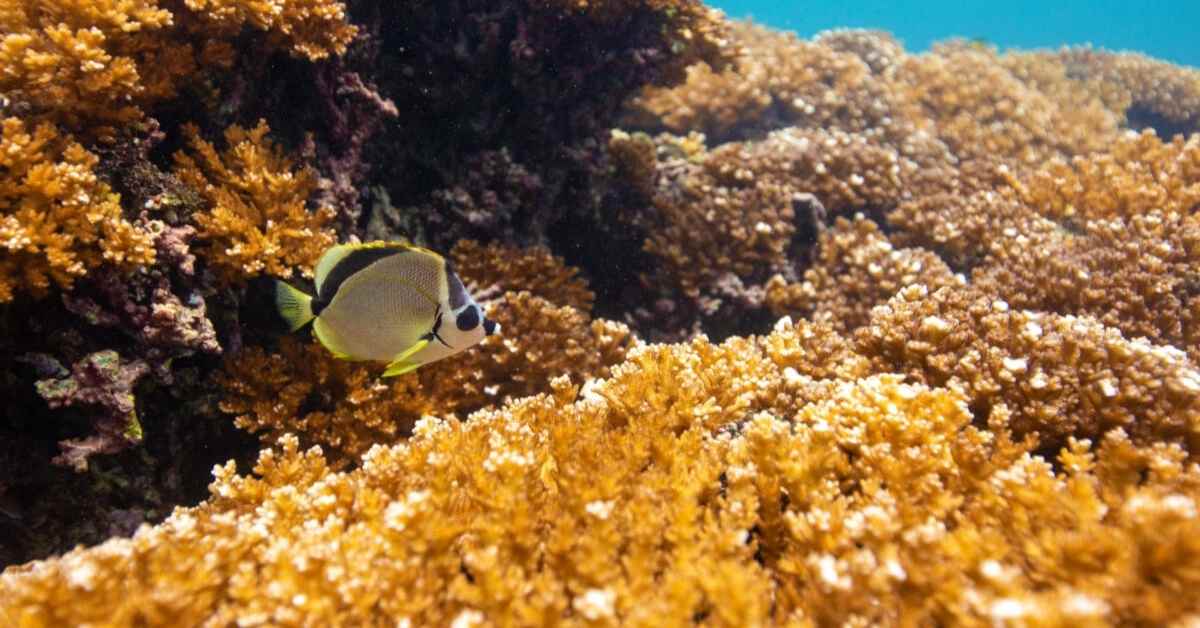- Researchers compared how genetically similar populations of Pocillopora corals cope with heat stress in Panama’s Gulf of Panama and Gulf of Chiriquí, both on the Pacific coast.
- The team looked at the entire holobiont — the coral’s symbionts, microbiome and physiology — in addition to its genome and environment, finding that the holobiont may play an outsized role in boosting the corals’ ability to cope with heat extremes.
- The team found that corals exposed to upwelling in the Gulf of Panama were better able to withstand higher temperatures, thanks in part to their microbiomes.
- The work points to the importance of better understanding how symbiotic relationships and microbiomes interact with corals to increase their resilience.
As ocean temperatures set new heat records, coral reef scientists are on a mission to identify which species and reefs can tolerate heat stress the best. But how and why do some corals cope with heat extremes better than others?
A research team led by the Smithsonian Tropical Research Institute in Panama investigated this question by studying not just corals’ genes and environment, but also their microbiomes.
By running a series of heat stress tests on two populations of Pocillopora corals — one from the Gulf of Panama and the other from the Gulf of Chiriquí, both on Panama’s Pacific coast — they found that corals exposed to upwelling in the Gulf of Panama were better able to withstand higher temperatures, thanks in part to their microbiomes. The study was published in June in the journal Current Biology.
A coral’s microbiome is made up of microorganisms such as algae and bacteria, some of which are considered “symbionts” that co-evolved to live within a host coral. Collectively, the microbiome, symbionts and host are called the holobiont.
The new study is the first in the Eastern Pacific to assess coral heat tolerance by looking at the entire holobiont, said Victoria Marie Glynn, an evolutionary biologist and lead author of the study, who at the time was earning her doctorate at McGill University in Canada.
“You cannot separate what the host is doing from what its microbiome is doing,” Glynn said. Microbiomes can influence gene expression and adaptation, for example. “All of that should be really thought of as a single unit — in this case, under climate change.”

In the Gulf of Panama, a natural process called upwelling pushes cold water and nutrients from deep in the ocean to shallower areas, creating sudden spikes and dips in temperature.
But in the Gulf of Chiriquí, just 100 kilometers (60 miles) west, the water temperature stays relatively constant year-round. This one difference between the two gulfs, the team found, may play an outsized role in how well corals — and the symbionts in their microbiome — can tolerate heat.
The heat stress experiments happened over the course of just eight hours.
First, scientists collected live Pocillopora corals from six reefs — three from each gulf — and brought them on board a research boat. Then they added the corals to eight tanks pumped with local seawater, each at various temperatures ranging from 28.5-36° Celsius (83.3-96.8° Fahrenheit).
After eight hours of gradually raising the heat to each tank’s peak temperature, the corals sat in the tanks at 28.5° Celsius overnight, and the team took measurements the following morning.
The experimental setup the team used to test the corals’ heat tolerance is called the Coral Bleaching Automated Stress System, or CBASS — like a “cardiac stress test for corals,” said Dan Barshis, a coral biologist at Old Dominion University in the U.S., who co-developed CBASS but wasn’t involved with the recent study.
The tests are short but portable, making it possible to study live corals in real time straight from their native environment.
“What we’re trying to do is look for consistent patterns,” Barshis said, which requires studying different coral species in different environments across all oceans.
Upwelling is largely responsible for the resilience of the Gulf of Panama corals, the authors found, creating higher baseline levels of stress from the sudden hot and cold extremes. But also understanding the microbiome’s role was crucial, albeit tricky, to unlocking the mystery of how they can cope with such high temperatures.

Corals evolved symbiotic relationships with algae that in turn have all kinds of effects on their health and physiology, Glynn said.
“The coral actually has to suppress its immune system to allow this to happen,” she said. “It’s almost a controlled infection.”
But at high temperatures, and under high stress, this relationship with their algal symbionts breaks down. That’s when bleaching occurs, a phenomenon in which corals eject their symbiotic algae. While bleaching does not immediately kill coral, prolonged bleaching events can lead to weakening and death.
When temperature extremes induce a stress response from corals and the microbes living within them, they produce high amounts of reactive forms of oxygen-containing molecules. In large quantities, these molecules are harmful and can be a sign that bleaching is happening.
The Gulf of Panama corals, however, were better at producing enzymes that neutralize these molecules as a coping mechanism — similar to how antibodies protect the body from viruses, said Laura Fernandes De Barros Marangoni, a marine biologist at King Abdullah University of Science and Technology in Saudi Arabia and a co-author of the study. So, “when a heat wave comes, they’re more prepared to deal with it,” she said.
Scientists know that environmental, genetic, and symbiotic relationships are all important for heat resilience.
“But we don’t know [what’s] most important all the time,” Barshis said. “[Corals] seem simple, but they’re very complex communities of different organisms.”
The research team also noticed some key genetic differences in the Gulf of Panama populations. One gene, for example, seemingly helps corals determine whether their algal symbionts are healthy or dying. Another gene, meanwhile, seems to keep key developmental proteins intact during heat stress.
The research also shows that certain symbiotic relationships can help corals survive, even with the same genes as less successful populations, said Christian Voolstra, a coral biologist at the University of Konstanz, Germany, who reviewed the paper.
Voolstra highlighted another valuable takeaway: Once corals adapt to be much more prepared for heat stress, such as those in the Gulf of Panama, they should retain those beneficial adaptations and symbiotic relationships even if they spawn in calmer environments, such as the Gulf of Chiriquí.
This acclimatization response is similar to how humans cope with allergies by micro-dosing their exposure, he said, providing corals with a climate-change buffer.

In the Red Sea, for example, where Voolstra and Barshis originally co-developed and tested CBASS, corals in the southern part evolved resilience to high temperatures because the water is warmer. Over time, those corals dispersed their larvae, which gradually colonized northward, where the water is cooler.
“That pretty much leads to a situation where these northern Red Sea corals have a climate change insurance [policy] for the next 200 years,” Voolstra said. “I would interpret this study similarly.”
More recently, scientists discovered a thriving coral reef in Honduras’s abnormally hot and polluted Tela Bay, which similarly shows how corals can adapt to tough conditions. Combined, these studies reveal the importance of Central America’s reefs to understanding corals’ ability to adapt to harsh conditions writ large, Glynn added.
Coral resilience research is also crucial for helping scientists figure out which populations are best to prioritize for conservation efforts, and which beneficial traits can be boosted through efforts like crossbreeding in struggling corals, Marangoni said.
“The coral microbiome is just such an important element of these organisms’ resistance to thermal stress,” Glynn said. “If you just look at the coral by itself, you’re missing a lot of what’s happening behind the scenes.”
This article was originally published on Mongabay.
Header Image by Ana Endara, STRI.



